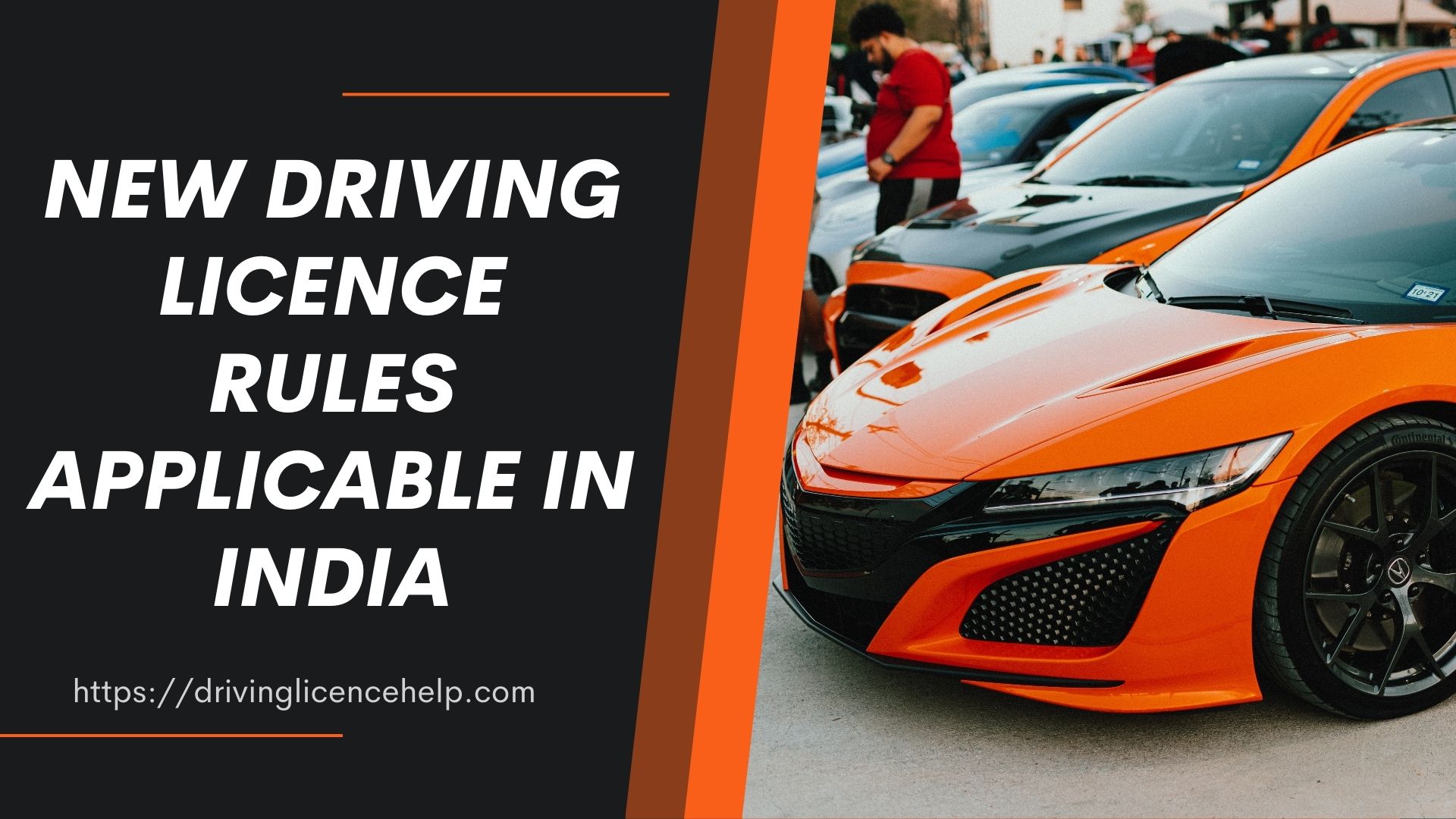Introduction:
Driving licences are an essential document for individuals who wish to operate motor vehicles legally in India. To ensure road safety and streamline the licensing process, the Indian government periodically updates the driving licence rules. These rules encompass various aspects such as eligibility criteria, application procedures, testing requirements, and validity periods. In this article, we will explore the latest driving licence rules applicable in India, highlighting the key changes and their significance.
I. Eligibility Criteria:
To obtain a driving licence in India, applicants must fulfill certain eligibility criteria. The minimum age requirement varies depending on the type of vehicle. As per the new rules, the minimum age for obtaining a driving licence for a non-transport vehicle (e.g., cars and motorcycles) is 18 years, while for transport vehicles (e.g., commercial vehicles), it is 20 years. Additionally, applicants must possess a valid learner’s licence and complete the necessary training from a recognized driving school or institution.
II. Online Application and Testing:
One of the notable changes in the new driving licence rules is the emphasis on online application and testing procedures. The government has introduced a centralized web portal where applicants can submit their driving licence applications, book appointments for tests, and access relevant information. This move aims to streamline the process, reduce paperwork, and provide a more convenient experience for applicants. Moreover, online tests for both theoretical and practical aspects of driving have been introduced to evaluate applicants’ knowledge and skills.
III. Validity Period and Renewal:
The new driving licence rules also address the validity period and renewal process. Driving licences for non-transport vehicles are now valid for 20 years or until the age of 50, whichever is earlier. For transport vehicles, the validity period is reduced to 5 years. To renew their licences, individuals need to undergo a medical examination to assess their fitness to drive and fulfill any additional requirements mandated by the regional transport office.
IV. Penalties and Offenses:
The revised driving licence rules in India have also introduced stricter penalties for traffic offenses and violations. The government aims to curb reckless driving and ensure compliance with traffic regulations. Offenses such as overspeeding, drunk driving, using mobile phones while driving, and not wearing seat belts or helmets carry hefty fines and penalties. In severe cases, the driving licence may be suspended or canceled.
V. Upgraded Security Features:
The new driving licence rules also prioritize the integration of advanced security features to combat fraud and ensure the authenticity of the document. The driving licences now incorporate features such as holograms, microprinting, QR codes, and embedded chips. These enhancements make it harder to counterfeit or tamper with driving licences, thereby increasing their reliability and reducing the chances of identity theft or misuse.
VI. Promoting Digitalization and Interoperability:
In line with the government’s digitalization initiatives, the new driving licence rules aim to promote the use of digital platforms and interoperable systems. The driving licences can now be stored in digital formats, such as mobile applications or smart cards, making them easily accessible and reducing the need for carrying physical copies. Furthermore, efforts are being made to establish interoperability among different states, enabling individuals to use their driving licences across the country without the hassle of obtaining separate licences for each state.
VII. Special Provisions for Commercial Drivers:
The revised driving licence rules also introduce special provisions for commercial drivers. Commercial vehicle drivers are now required to undergo additional training and certification specific to their vehicle type. This includes obtaining a commercial driving licence (CDL) and fulfilling specific medical and training requirements. These measures are aimed at ensuring that commercial drivers possess the necessary skills and knowledge to operate vehicles safely, ultimately enhancing road safety and reducing accidents involving commercial vehicles.
VIII. Awareness and Education Programs:
To create awareness about the new driving licence rules and promote road safety, the government is actively conducting education and awareness programs. These programs aim to educate individuals about the updated rules, safe driving practices, and the importance of adhering to traffic regulations. By fostering a culture of responsible driving, these initiatives strive to reduce accidents, injuries, and fatalities on Indian roads.
Suggested Read- Driving Licence Renewal
Conclusion:
The new driving licence rules in India represent a significant step towards enhancing road safety and improving the licensing process. With the emphasis on online applications and testing, the government aims to streamline the procedure and provide greater convenience to applicants. Additionally, the introduction of stricter penalties for traffic offenses serves as a deterrent, promoting responsible driving and reducing accidents on the roads. By staying updated with these DL rules, individuals can ensure compliance and contribute to a safer and more organized traffic environment in India.




